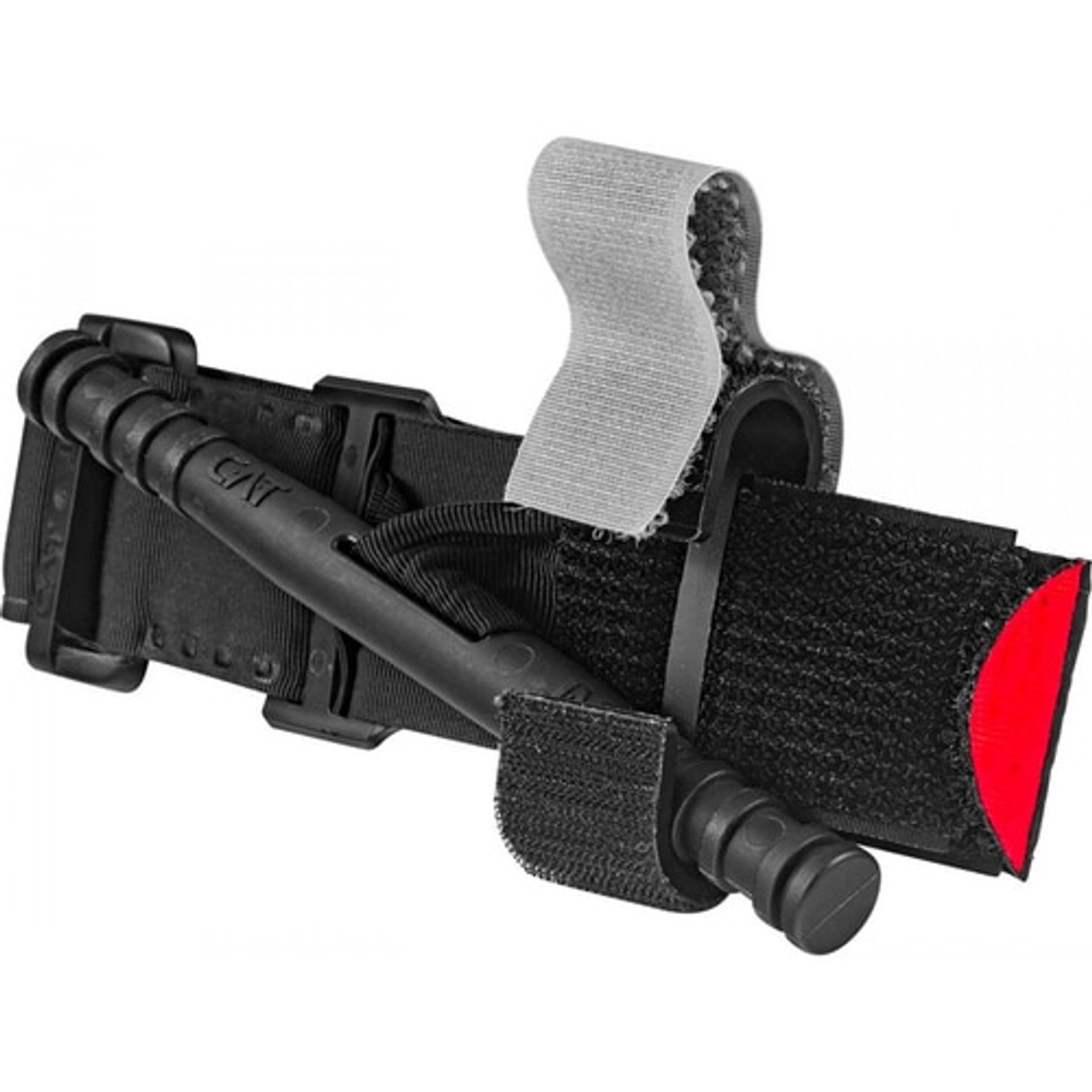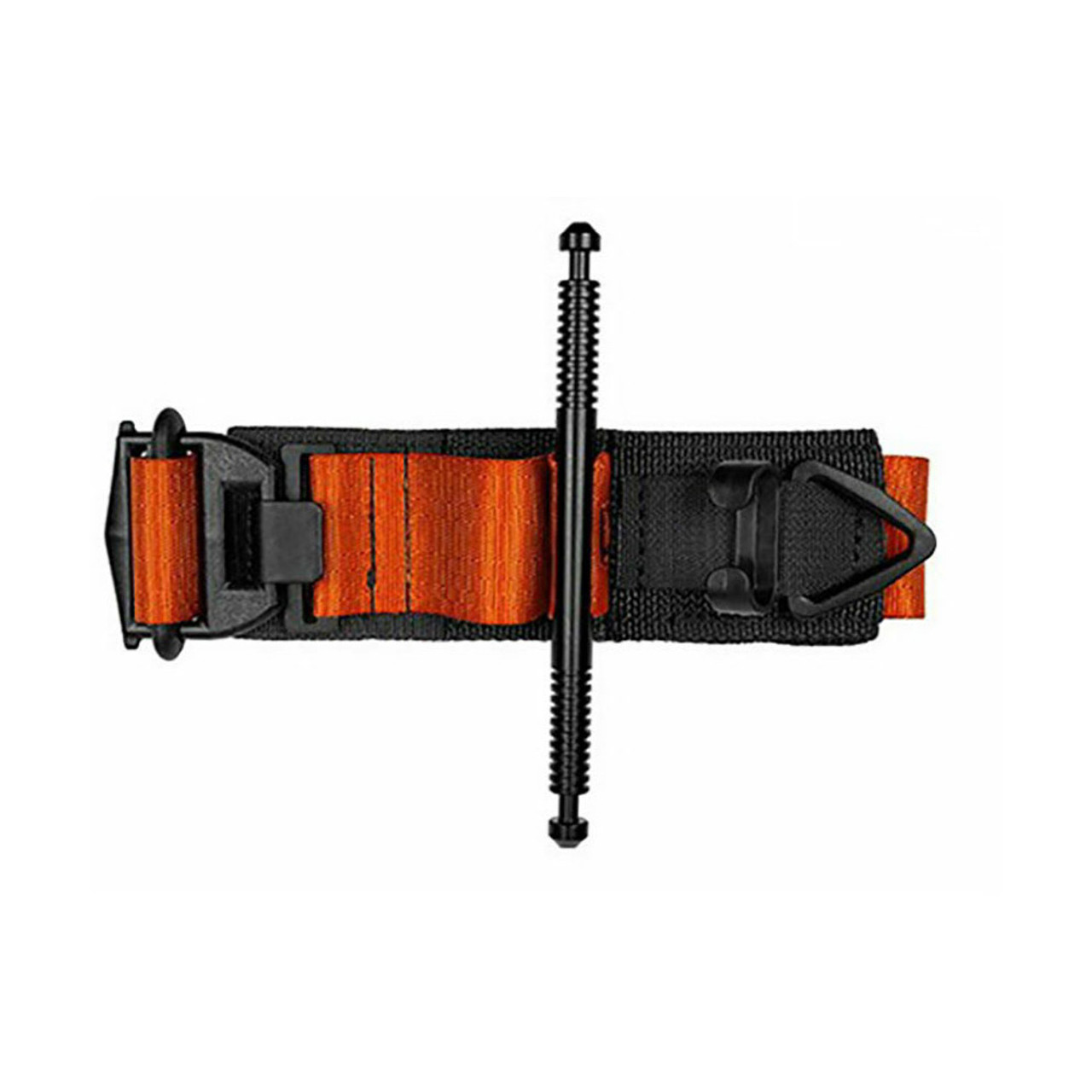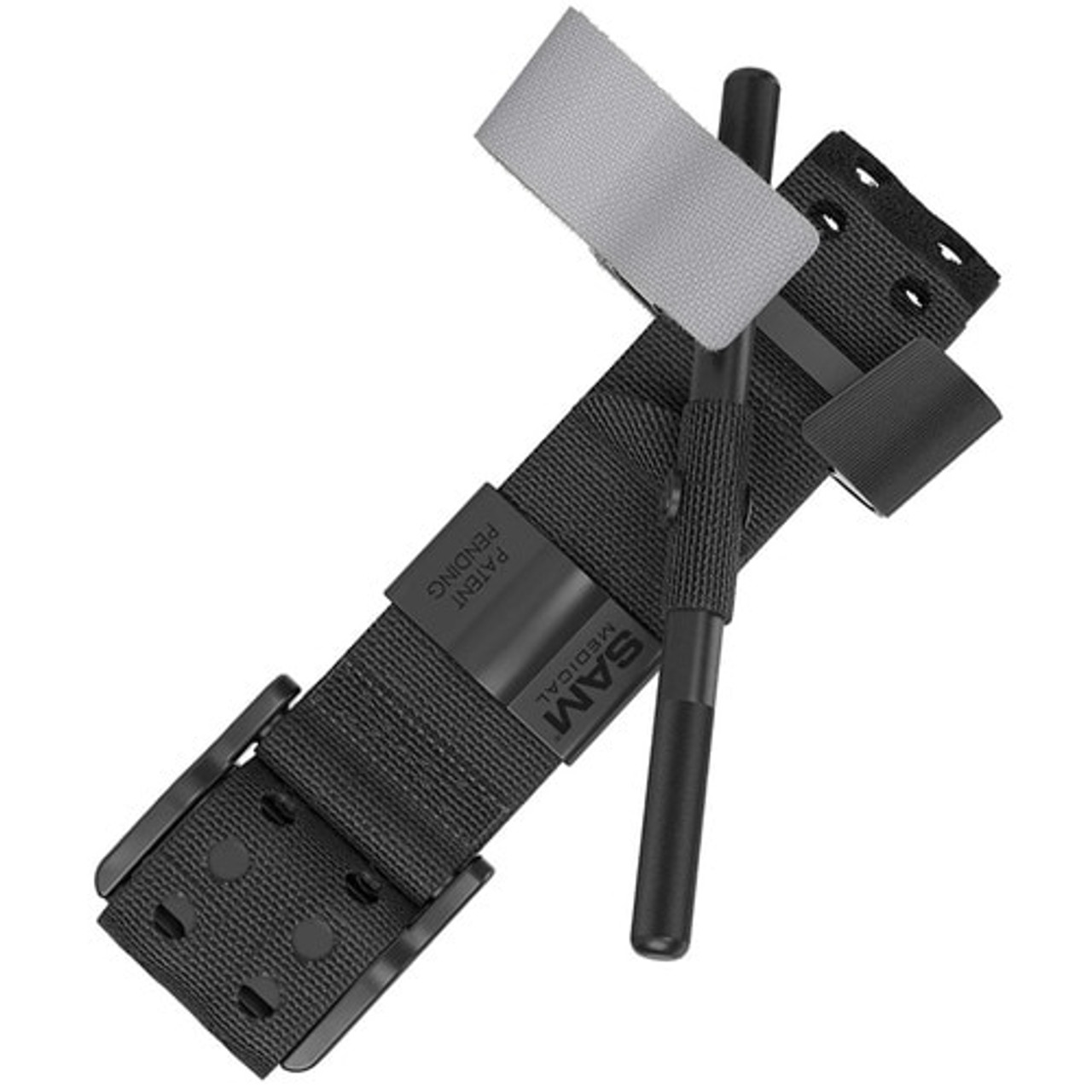Choosing the Right Tourniquet for You
Tourniquets can save lives—this is a fact that has been established beyond all doubt. It’s estimated 20% of people who died from traumatic injuries could have survived with quick bleeding control. Quite simply, using a tourniquet to “Stop the Bleed” may be the difference between life and death.
Tourniquets can save lives—this is a fact that has been established beyond all doubt. It’s estimated 20% of people who died from traumatic injuries could have survived with quick bleeding control. Quite simply, using a tourniquet to “Stop the Bleed” may be the difference between life and death.

What’s a Tourniquet?
Tourniquets are designed to stop bleeding from the extremities. They should be easy to use, durable, and mechanically effective to ensure stoppage of arterial blood flow. Occluding blood flow to an arm or a leg requires a surprising amount of pressure. We have all seen movies wherein the hero uses a t-shirt and a stick to save the wounded, but that simply does not happen in real life, with rare exceptions. Windlass and stretch-band tourniquets give the responder means to apply sufficient pressure to the entire circumference of a limb to occlude blood flow, in a less than a minute and without requiring super-human strength.
A separate category of tourniquets, called junctional tourniquets, are designed to stop bleeding in the inguinal (groin) and axilla (armpit) areas where an extremity tourniquet cannot be applied. For the purpose of this article, we’ll focus on tourniquets for use on arms and legs.
Tourniquets are designed to stop bleeding from the extremities. They should be easy to use, durable, and mechanically effective to ensure stoppage of arterial blood flow. Occluding blood flow to an arm or a leg requires a surprising amount of pressure. We have all seen movies wherein the hero uses a t-shirt and a stick to save the wounded, but that simply does not happen in real life, with rare exceptions. Windlass and stretch-band tourniquets give the responder means to apply sufficient pressure to the entire circumference of a limb to occlude blood flow, in a less than a minute and without requiring super-human strength.
A separate category of tourniquets, called junctional tourniquets, are designed to stop bleeding in the inguinal (groin) and axilla (armpit) areas where an extremity tourniquet cannot be applied. For the purpose of this article, we’ll focus on tourniquets for use on arms and legs.
How to choose the right one for you?
Consider Your Level of Training
This is the first thing to weigh. The latest and greatest tourniquet is nearly worthless if it's going to require precious minutes to figure out how to apply it correctly. We recommend that people equip themselves with the device with which they are most familiar, even if it is not the most highly rated one. The majority of tourniquets on the market can be applied in seconds if a person who has received training and has practiced with them.
In high-stress situations involving a major injury, fine motor skills can deteriorate significantly. So get familiar, practice right handed and left handed operation on others and on yourself. Windlass-driven tourniquets, such as the CAT (Combat Application Tourniquet), SAM XT or SOF, are fast, and very effective at stopping blood flow, but can be less intuitive to use. Training videos can be helpful but there is no substitute for muscle memory gained through repetition.
Other styles such as the SWAT-T are more intuitive, stretch and wrap designs. But you still need to practice, especially on yourself, as these can be tricky to self-apply in some situations, such as applying to your dominant arm using only your non-dominant arm.
Note: It is not recommended to train repeatedly with a windlass tourniquet that you intend to deploy for emergency use, as the inner bands can stretch out over time. Trainer versions (usually blue color) are available.
Consider Your Level of Training
This is the first thing to weigh. The latest and greatest tourniquet is nearly worthless if it's going to require precious minutes to figure out how to apply it correctly. We recommend that people equip themselves with the device with which they are most familiar, even if it is not the most highly rated one. The majority of tourniquets on the market can be applied in seconds if a person who has received training and has practiced with them.
In high-stress situations involving a major injury, fine motor skills can deteriorate significantly. So get familiar, practice right handed and left handed operation on others and on yourself. Windlass-driven tourniquets, such as the CAT (Combat Application Tourniquet), SAM XT or SOF, are fast, and very effective at stopping blood flow, but can be less intuitive to use. Training videos can be helpful but there is no substitute for muscle memory gained through repetition.
Other styles such as the SWAT-T are more intuitive, stretch and wrap designs. But you still need to practice, especially on yourself, as these can be tricky to self-apply in some situations, such as applying to your dominant arm using only your non-dominant arm.
Note: It is not recommended to train repeatedly with a windlass tourniquet that you intend to deploy for emergency use, as the inner bands can stretch out over time. Trainer versions (usually blue color) are available.
Assess Your Risk Profile
Determining your potential risks should be considered in choosing a tourniquet. Ask yourself, do you spend a time in places that are soft targets for a possible active shooter? Do you carry a firearm, and are you around firearms? Do you spend time in the backcountry, hunting or operating a chainsaw? Are you on the road so often that coming across a major accident is only a matter of time? When you’re doing any of these activities are you alone?
Consider these questions and your personal risk profile, as they bear on the types of injuries you might encounter—your time and distance to medical care and if you’re alone in high-risk situations and need to self-apply.
If self-application is a possibility, with practice, windlass types can be operated with one hand. (The SWAT-T can also be self-applied, but may require more practice in order to apply quickly and effectively.)
Where Will You Store the Tourniquet?
A person can bleed to death in a few minutes and it is often said that the best tourniquet is the one that is closest at hand when a critical incident occurs. Depending on your risk profile, you may want to select a tourniquet that can be easily carried on your person, in a belt-pouch, ankle kit or cargo pocket.
The SWAT-T can be carried in a pocket and is favored for its simplicity, ease of use, effectiveness and its multi-functionality (it makes a great compression bandage or used to cover a gauze pad and hold it in place). It is often included in Public Access Bleeding Control Stations and Bleeding Control Kits since even a minimally trained layperson can use it to good effect.
There are belt/vest/pack-mountable carrying cases designed for ease of access, keeping them secure but always within reach. If contained within an IFAK or Medical Kit, it is important that tourniquets are placed in a prominent position within the kit or bag, as rapid access to stop bleeding will be critical in an emergency.
Determining your potential risks should be considered in choosing a tourniquet. Ask yourself, do you spend a time in places that are soft targets for a possible active shooter? Do you carry a firearm, and are you around firearms? Do you spend time in the backcountry, hunting or operating a chainsaw? Are you on the road so often that coming across a major accident is only a matter of time? When you’re doing any of these activities are you alone?
Consider these questions and your personal risk profile, as they bear on the types of injuries you might encounter—your time and distance to medical care and if you’re alone in high-risk situations and need to self-apply.
If self-application is a possibility, with practice, windlass types can be operated with one hand. (The SWAT-T can also be self-applied, but may require more practice in order to apply quickly and effectively.)
Where Will You Store the Tourniquet?
A person can bleed to death in a few minutes and it is often said that the best tourniquet is the one that is closest at hand when a critical incident occurs. Depending on your risk profile, you may want to select a tourniquet that can be easily carried on your person, in a belt-pouch, ankle kit or cargo pocket.
The SWAT-T can be carried in a pocket and is favored for its simplicity, ease of use, effectiveness and its multi-functionality (it makes a great compression bandage or used to cover a gauze pad and hold it in place). It is often included in Public Access Bleeding Control Stations and Bleeding Control Kits since even a minimally trained layperson can use it to good effect.
There are belt/vest/pack-mountable carrying cases designed for ease of access, keeping them secure but always within reach. If contained within an IFAK or Medical Kit, it is important that tourniquets are placed in a prominent position within the kit or bag, as rapid access to stop bleeding will be critical in an emergency.

Cost
Any purpose-built tourniquet will out-perform an improvised solution. Many individuals and institutions—especially those who need to equip large numbers of people or prepare for a mass-casualty incident are constrained by budgets, both for the actual tourniquets and for the requisite training. We recommend making cost secondary to familiarity and experience with the device. If cost is an overriding concern, then getting training specifically for the use of the tourniquet you selected should be a priority.
The longer someone bleeds, the lower their chances for survival. The first person on-scene who can help the victim is the one most likely to utilize a tourniquet. Before purchasing, do an honest assessment of your personal readiness and capability and use the considerations discussed in this article to help guide your decision.
More information and a wide selection of tourniquets are available at https://rescue-essentials.com/tourniquets/.
Any purpose-built tourniquet will out-perform an improvised solution. Many individuals and institutions—especially those who need to equip large numbers of people or prepare for a mass-casualty incident are constrained by budgets, both for the actual tourniquets and for the requisite training. We recommend making cost secondary to familiarity and experience with the device. If cost is an overriding concern, then getting training specifically for the use of the tourniquet you selected should be a priority.
Quality Assurance
Quality counts when life-saving dependability is at stake. All U.S. Tourniquet manufacturers are required by the FDA to have compliant quality management system at a minimum ISO 9001 certification. Not all manufacturers list ISO compliance on their websites. So the best practice is to seek out and buy a proven tourniquet from a trusted store.
The longer someone bleeds, the lower their chances for survival. The first person on-scene who can help the victim is the one most likely to utilize a tourniquet. Before purchasing, do an honest assessment of your personal readiness and capability and use the considerations discussed in this article to help guide your decision.
More information and a wide selection of tourniquets are available at https://rescue-essentials.com/tourniquets/.








